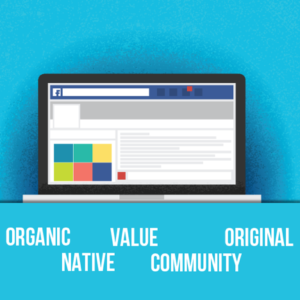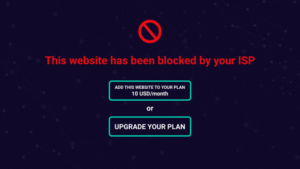 Get In Touch
Get In Touch
 Get In Touch
Get In Touch
When we think of social media and the right strategy to develop, we immediately think of Millennials and Gen Z’ers; and for good reason, too. These two generations grew up on social media and quite frankly, invented it. Their likes and dislikes create the ebb and flow of how businesses market their products to the public via social media channels. Millennials and Gen Z-ers as a whole have been disruptors in the marketing industry and businesses have had no choice but to fall in line.
But what about the brands whose products are geared toward the older generations? It’s no secret that older generations are less likely to adapt to technology as quickly as their younger counterparts. Yet the modes of traditional marketing are dwindling. For companies to keep up, they have to adapt, whether or not their clients want to. So, how do brands whose primary objective is to reach the aging population do so in a primarily digital world?
Research from marketing agencies in Philadelphia has shown that there are four main social media platforms that older demographics use regularly: Facebook, LinkedIn, Twitter, and Pinterest (in that order).
For Value: Facebook
In its ability to be a viable source of marketing for companies wanting to reach out to older demographic, Facebook has far surpassed the competition. In comparison to Instagram, a site Facebook also owns, older target markets frequent Facebook more than any other site. Advertisements seen on Facebook are given a higher weight of credibility than those on other social platforms. Additionally, the older demographic is more inclined to use Facebook as an informational resource rather than a selfie sharing platform. You’re more likely to have your message stick on Facebook than on other social media sites.
For Business: LinkedIn
LinkedIn has become more than just a platform that connects people of similar industries. It has quickly grown to become a trusted source of B2B interactions. Though it is primarily used by professional millennials, there is a solid presence of 40 and up business owners and professionals on the social site. If your goal is to market to older business professionals, then this is the platform for you. However, if it’s a personal product or B2C interactions outside of the job searching capacity, then you’re better off going back to Facebook.
For Engagement: Twitter
To us, it’s a hashtag. To your grandmother, it’s the “telephone number symbol”. Regardless, we have Twitter to thank for it as it is the number one way businesses have been able to engage with their consumers through the social site. Though slow to adopt Twitter, Gen X’ers and Baby Boomers are on the site and looking for content that speaks to them. A number of CEOS and marketing agencies have noticed that they have had much success engaging with the older demographic of their buyers through Twitter chats and hashtags.
engage with their consumers through the social site. Though slow to adopt Twitter, Gen X’ers and Baby Boomers are on the site and looking for content that speaks to them. A number of CEOS and marketing agencies have noticed that they have had much success engaging with the older demographic of their buyers through Twitter chats and hashtags.
For Content Creation: Pinterest
We’re slowly seeing Pinterest level ideas filter onto Facebook, but people still rely on Pinterest for the vast majority of content creation and ideas. For the DIY Mom or the Weekend Warrior Dad, Pinterest has led the way. Older demographics grasp to communities and platforms that make it easier to share. Due to their hesitancy in adopting technology, they look to the younger generations for validation of a social site or their own ideas. Marketers can benefit from this by creating and engaging with those older communities on Pinterest.
As with any marketing strategy, it’s important to know your demographic. You have to study how they think, how they talk, and what their interests are. What works for a Millennial will not work on a Baby Boomer. Diversifying your social strategy to reflect your demographic can help your business see success in the long run.
Recently, Facebook has been in the news for exposing data that affected up to 87 million of its users. Currently, the fight to absolve the social media giant of any wrongdoing is intensely waging on the Senate floor and all over the news. However, before Facebook was fraught with big data scandal, they made a not-so-subtle change to their newsfeed algorithm.
Back in January, Mark Zuckerberg announced from his Facebook page that the social media site will begin to change the way users see content on their newsfeeds. Content developed and published by brand advertisers, news sites, and other major corporate entities will be pushed down and user-generated, more organic content will be weighed more. This is an effort to take the site back to its roots of being a place where you can reconnect with loved ones and friends.

Over the years, Facebook has become a major entity in the online marketing industry. While many people thought it wouldn’t last, it has become a primary form of marketing for many brands, whether startup or Fortune 500. Not just with sponsored content, but also with regular updates and user engagement. Facebook has grown to be a major player in how brands advertise themselves to their Internet savvy consumers. With the new algorithm, the rules of the game have changed.
It’s important to note that the Facebook algorithm change does not mean content from your Business Manager (boosted posts, ads, etc.) are just never going to show up. They will be delivered as usual to their target audience. What is changing is the organic nature of the actual newsfeed. Instead of customers seeing your latest gimmicky commercial, your latest spin on incorporating your logo branding into memes, expert usage of brand gifs, or gossip news about the Kardashians, they’ll be met with more content about their niece’s first soccer season and updates about a former college roommate’s pregnancy journey. Content that is meant to spark communication and reconnect is Facebook’s current strategy for the site.
What does this mean for your business? Basically, it means you need to create a stronger value proposition within your content. Content that focuses less on your product and more on the emotions or conversation that it can evoke within your customers will do a better job with ranking organically. Create content that:
You can also work to circumnavigate the loss in organic traffic by utilizing marketing efforts from other platforms. Use your blogs, website, and other social media sites to encourage visits to your Facebook page.
What we’re seeing from Facebook is a complete 180 from the path Facebook has been venturing down. Over the years, Facebook has been notorious for offering low-value content that simply encourages useless notifications instead of useful news. The goal of the algorithm change doesn’t bode well for businesses. As casual users; however, Facebook wants to encourage meaningful interaction. The goal is put the emphasis back on creating communities and less on being a curated commercial entity. This isn’t the end of advertising and publishing on Facebook. It just means as businesses and marketers, we need to put our thinking caps on and work a little harder.
The White Walkers aren’t the only ones waging controversial wars. Currently, our government is in a battle amongst one another over net neutrality and how they believe the internet should be accessed. On one hand, you have those who believe the internet should be open and accessible for all on the same level. During the President Obama administration in 2015, regulations were put in place that helped protect this belief by keeping the internet neutral. On the other hand, you have those in the government who believe the internet should be tiered and deregulated, thus the process of the net neutrality repeal in December of 2017.
While net neutrality has become a buzz word over the last few months, many marketers and top branding firms in Philadelphia and all other major cities are still at a loss regarding its importance and what those changes could mean. Here, we break down a few of the need to know points regarding net neutrality and its pending reversal.
What is Net Neutrality?
Simply put, net neutrality is a set of rules that were created to force Internet service providers to treat all web traffic the same. These rules put forth in 2015 reclassified the internet as a public utility, similar to telephone services, airlines, utilities, etc. The internet is therefore governed by telecommunications and high speed service must be provided to all without discrimination or unfair regulations. Essentially, under this regulation, Internet Service Providers, or ISPs, are more of the intermediary provider rather than a manager of the content that is delivered. The internet provided should be treated fairly and accessible for all.
What is the current issue?
Back in December of 2017, the Federal Communications Commission voted in a 3-2 party line vote to abolish net neutrality regulations and undo protections that made the internet fair playing grounds for all. Now that Net Neutrality has been appealed, the classification of internet has changed. It will no longer be considered a public utility, but instead an information service. This in turn removes any ability the FCC would have to regulate how the internet is managed and provided.
What does a repeal of Net Neutrality mean for me?
If you’re familiar with many of the graphics that have circulated around the internet, then you have an idea what a tiered internet service would look like. Many countries such as Guatemala, Portugal, and Morocco already have experience with this less than ideal system. Though this isn’t necessarily the plan for our internet, it does open the door for the internet to become structured in such a manner. Additionally, it also allows for certain businesses to receive prime recognition by search engines and internet provides, making it harder for digital marketers and branders to effectively do their jobs.
The repeal of Net Neutrality sounds a little off putting for many, and for good reason. However, to be fair, the regulations put in place to help safeguard the internet were only recently put in place over the last 2-3 years. Though the idea of having to pay extra just to binge watch our favorite Netflix shows doesn’t sound appealing at all, the deregulation is supposed to force ISPs to become more transparent with their policies and practices. We’ll just have to wait and see what the future holds for the internet in the US.
 We’re still in the beginning stages of 2018, but a few notable social media events have already taken place. Snapchat has launched an update that threw the world into frenzy. Instagram still refuses to put the timeline back in chronological order. Facebook is changing the frequency in which companies and end users interact and Twitter doubled their character count. These changes weren’t just to inconvenience us or keep us on our toes. The more notable social media sites are changing their algorithms and the way they do business because aspects of social media as we know it are starting to change. From chatbots to augmented reality, welcome to the Social Media 2018.
We’re still in the beginning stages of 2018, but a few notable social media events have already taken place. Snapchat has launched an update that threw the world into frenzy. Instagram still refuses to put the timeline back in chronological order. Facebook is changing the frequency in which companies and end users interact and Twitter doubled their character count. These changes weren’t just to inconvenience us or keep us on our toes. The more notable social media sites are changing their algorithms and the way they do business because aspects of social media as we know it are starting to change. From chatbots to augmented reality, welcome to the Social Media 2018.
First up on our list of social trends for this year is one that many PR firms and ad agencies in Philadelphia and other major cities need to consider: Generation Z. For the past few years, Millennials have been the key demographic that social media marketers have made the focal point of their attention. However, the tastes and desires of Generation Z are going to greatly change the way marketers need to communicate with their audiences. Generation Z, those aging 2 – 19 are much more active on social media than their predecessors. While we don’t see 2 year olds on Twitter, the stats show that Gen Z is in large part responsible for the success of online videos. An overwhelming 81% report interacting with at least one online video a day, a number that is higher than Millennials. As Generation Z begins to graduate school and enter the workforce, their buying power will increase, thus making their social media influence and voice greater.
Next on our list of social trends to watch for this year includes one that made its appearance in 2016, but is starting to take shape even more: Chatbots. Have you ever visited a site, maybe a car dealership and within seconds of entering the website, a chat appears with a friendly face asking. “How can I help you today”? That’s an example of a chatbot and they are becoming increasingly prevalent. More brands are looking to utilize chatbots to help automate the communication process. More than 100,000 chatbots were used by different brands on Facebook in 2017. Effective communication between brand and consumer is going to be a major social trend going forward as the technology improves. It won’t be uncommon to see this on future lists to come as it advances.
Finally, as the trend for seamless communication for brands and their audiences continues, so does one more thing: Brand Social Awareness. Social media has made it hard for anyone to do anything in private. Small typos can become big PR mistakes. Must we remind you of the Yahoo and “bigger Navy” incident? The 24/7 visibility of brands on social media has forced brands to become more accountable for their message, products, and strategies going forward. While some companies have been able to bounce back from their social nightmares, others have chosen to delete their social presence completely. In this day and age, being a brand without a social presence isn’t a brand at all. 2018 will the see the rise of the socially aware social media user and the socially accountable brand all at once.
Even though this year is in full swing, these are still major trends that we can expect to see develop as the year progresses. Be sure to keep your social strategy updated and your social listening tools always plugged in. Social media can only be predicted but so much, and like consumers, tastes and trends change like the wind.
 Recently, Instagram released a new feature for shops and brands on the site. This feature allows you tag your products so that shoppers can readily identify the item, its price, and purchase it. As exciting as this is for brands everywhere, the rollout hasn’t completely caught on for every single business. Instagram is still working the bugs out of this feature and only a select number of brands currently have it.
Recently, Instagram released a new feature for shops and brands on the site. This feature allows you tag your products so that shoppers can readily identify the item, its price, and purchase it. As exciting as this is for brands everywhere, the rollout hasn’t completely caught on for every single business. Instagram is still working the bugs out of this feature and only a select number of brands currently have it.
So, what do you do if you’re one of the many Instagram Business profiles that don’t have this feature yet? You may not be able to take advantage of this great update just yet, but there are still a number of ways you can draw an audience to your Instagram page and your products.
Creative Content
“Content is King.” You’ve heard this time and time again, but we’re going to say it one more time because it’s true. “Content IS King!” Whether it’s on your website, a blog, or your social media, the content of your brand goes a long way in the constant struggle to effectively communicate with your intended audience. One way Instagram helps tell the story of your brand where other sites fail is through visuals. Yes, other social media sites allow you the ability to post photos and write captions, but none have focused their sole attention on the development of engaging visuals quite like Instagram. With the largest group of Instagram users ranging between 25 – 34 year olds, the photos you post to Instagram need to be creative, vibrant, and most of all engaging.
Social Influencers
Reaching out to social influencers can be a daunting task, especially if you’re a new brand. Enlisting the help of local agencies, such as some of the notable public relations firms in Philadelphia, a great hub of social influencers, can go a long way. Social media influencers are a great resource to have in your back pocket. For one, they have nailed the nuances of social media for them to reach the point of visibility that makes you seek out their help. However, if you don’t have the big bucks to land a major social influencer, micro influencers can help just the same. Micro influencers are those users who have between 1,000 and 100,000 social media followers. They are typically less expensive to work with and have an audience who is more likely to engage with their posts rather than simply skip over.
Hashtags and Geotags
Hashtags have been misunderstood for as long as they have been used. What originated on Twitter has long sense spread to Instagram and now Facebook over the last few years. Though they still haven’t quite caught on nor are as effective on Facebook, their usefulness on Instagram is proof enough that brands still need to incorporate them into their strategy in one way or another. Relevant hashtag research and usage can help create visibility for your brand long after the post has left the main timeline of users. In addition to your own brand’s hashtags and the other industry-related hashtags you find, there is also room to use location-driven hashtags such as “#newyorkcity” and the larger conversation hashtags such as “#motivationmonday” or “#nationalpizzaday”.
There is no such thing as a “one strategy fits all” approach to any brand, especially on social media. What may work in one industry, will not always directly translate to results in another. However, these are simple, across the board strategies that can help set your business up for success so whether or not you get the new updates first or last, your business will always boom.
Entrepreneurship and starting out on your own as a small business is exciting, but can be overwhelming. Artificial intelligence (AI) is just one of the many challenges that businesses must consider in order to be an effective entrepreneur. Our current business landscape does not allow for the set-it-and-forget-it mentality of the past. Entrepreneurs must continually be accustomed with new technologies that are relevant to their potential clients, and be up to speed on how to leverage these technologies. Artificial intelligence is just one of the many technologies that entrepreneurs need to master before being successful online and in a brick and mortar store. Here’s why:
Personalized Ecommerce is Everywhere
Personalization must be multi-channel and multidimensional. Mobile, website, brick and mortar. While no one likes to think of your phone as a tracking device, when you use your phone for online shopping, to read reviews, directions, searches, store specific apps and more, the information it gathers is extremely personalized and spot-on. With the assistance of collaborative filters such as best sellers, recently viewed, trends, bought together, and more, personalized purchase suggestions are on every website your visit–whether it is an ecommerce website or not. Native ads differentiate from regular ads because they blend into the digital marketing environment they are posted in. Native advertising feels organic because it fits right into the page and content the potential customer was already reading. These ads can be in-feed (like on Facebook or Twitter), in recommendation widgets (such as commonly bought together), or custom content (content created for a specific brand that is high quality and engaging)–but the unifying element is that each type of ad is personalized for the reader. Not only is personalized ecommerce everywhere from mobile apps to websites and brick and mortar stores thanks to artificial intelligence, customers have come to anticipate and appreciate the suggestions.
Artificial Intelligence Devices Have Merged Into the Home
These little, yet mighty devices and personal assistants might just be computers, but they can do anything and everything from updating shopping lists, making recommendations, and even doing the ordering for you at the command of your voice. Not to mention businesses can make the process easier to the computer algorithms by creating Alexa Skills and Google Actions. Alexa Skills and Google Actions are small software programs that act like apps. These “apps” allow customers to activate their favorite brands and products without having to use their phone app. For example, for Alexa, you can play Jeopardy by saying, “Alexa, play Jeopardy.” Jeopardy has created a skill that allows you to play the 6th unused clues–one from each category–for that day. These skills are not just game based, in fact some of the most helpful skills are shopping or home organization based. You can tell Alexa to make a shopping list that is updated automatically in real time. So while you are out shopping, your kids can add to the list in case there was something that might have been forgotten–plus, your kids don’t have to have access to the technology via a tablet or phone–they simply have to say “Hey Alexa! Add oreos to the shopping list.” If you have a Prime membership, Alexa can even walk you through a purchase so you can buy things hands-free. It can be hard to believe these mighty little personal assistants are just artificial intelligence (AI) devices. Entrepreneurs can leverage these artificial intelligence devices by creating Alexa Skills and Google Actions that would help the end user.
Artificial Intelligence is not something from the movies anymore. Artificial Intelligence is in our homes, phones and brick and mortar stores making suggestions for us and helping to personalize our shopping experience and suggest potential products and services. Entrepreneurs must be aware of how their brand is presented across all channels to ensure their products and services can be found by these artificial intelligence devices. Because AI devices are computers, consistency is key, if your brand isn’t consistent you would highly benefit from branding services. Entrepreneurs must leverage the integration and immersion of artificial intelligence into everyday life in order to be successful in the ever-changing digital landscape.
In today’s fast-paced world filled with technology that has caused people to expect instant gratification, it’s no surprise that customers want to hear from companies immediately if they have an issue or question. Whether they contact the brand via social media, phone, email, or chat; customers want to know that their concerns are being read, handled, and responded to in a timely manner.
One way that companies are meeting this demand from customers is with the use of chatbots. Chatbots have become incredibly popular over the last handful of years as customer demand has increased when it comes to instant support. There is a downside to using chatbots and that is a lack of human interaction with customers. Here’s how your company can integrate chatbots without replacing the human side of customer service via branding companies.
Use Chatbots for Simple Issues
Your company should use chatbots for simple issues that need to be resolved quickly. They can also be used in a pop-up box or screen to welcome visitors to the company’s website. When you utilize chatbots for simple fixes, and ones that take less than five minutes to solve, you free up your customer service employees for more important issues.
Streamline Customer Questions
When you put a chatbot to use on your company’s website you will be able to streamline questions submitted by customers. Even if customers have to wait a minute or two after speaking with a chatbot, your human customer service rep will be better versed in the issue once they take control of the chat. The questions submitted by the customers can be sorted based on level of difficulty, issue, category or product type.
If your company needs a new way to improve its customer service, consider taking a look at chatbots and how they can be integrated without losing the human aspect of the service provided.
 Do you remember when the Burger King Twitter page was hacked back in 2013? Or maybe when Secret Flying, a travel site that connects you to deals, tweeted they would pay for customers’ flights if the Patriots won Super Bowl LI, only to go back on their word? How about more recently the backlash that Dove has received from its new ad released on Facebook that depicts an African American woman turning herself Caucasian to “get clean”? These are just 3 of the many examples that happen weekly, if not daily, with brand’s missing the mark on their social media strategy.
Do you remember when the Burger King Twitter page was hacked back in 2013? Or maybe when Secret Flying, a travel site that connects you to deals, tweeted they would pay for customers’ flights if the Patriots won Super Bowl LI, only to go back on their word? How about more recently the backlash that Dove has received from its new ad released on Facebook that depicts an African American woman turning herself Caucasian to “get clean”? These are just 3 of the many examples that happen weekly, if not daily, with brand’s missing the mark on their social media strategy.
As funny as some of the social media flubs that we see may be, they can pose a real danger to your brand’s reputation. One wrong move, misquote, poor graphic, or misusage of a hashtag, and you can kiss your pristine reputation and sales goodbye. For branding companies, a flawless social media strategy that can address these problems is one of the many issues that keep them up at night.
That’s where your social media crisis management plan comes into play. If this is your first time seeing those words, that’s a problem. A social media crisis management plan is a plan of action put in place for your digital marketing and possibly your public relations team to address social media issues quickly, quietly, and efficiently.
To develop your own social media crisis management plan, here are the guidelines that many branding companies use:
While it’s practically impossible to plan for every occasion, you want to make sure that your business has some form of a crisis management plan in place. You don’t want to wind up like some of our favorite brands with a less than favorable reputation.
 Have you ever come across an article that looked interesting and when you opened it up, you were instantly met with a number of grammatical and spelling errors? Imagine web design companies or SEO experts misspelling industry-relevant terms in their content or blogs. To an English teacher or content writer, nothing makes you cringe more than the improper usage of “there/their/they’re” or “mine as well” instead of “might as well.” While these types of spelling and grammar mistakes have been known to fuel hashtags (covfefe anyone?), they can do a lot to discredit your authority and credibility.
Have you ever come across an article that looked interesting and when you opened it up, you were instantly met with a number of grammatical and spelling errors? Imagine web design companies or SEO experts misspelling industry-relevant terms in their content or blogs. To an English teacher or content writer, nothing makes you cringe more than the improper usage of “there/their/they’re” or “mine as well” instead of “might as well.” While these types of spelling and grammar mistakes have been known to fuel hashtags (covfefe anyone?), they can do a lot to discredit your authority and credibility.
No one will argue that good content needs to be as engaging as it is properly written. However, with the latest Internet conventions and 140 character limits, often times, it’s grammar that is axed before anything else. Just because we are met with limitations does not mean that content writers still shouldn’t practice good grammar and limit the number of mistakes that they commit. There are a variety of tools that a good content marketer should have under their belt.
Thesaurus
Engaging content is not just about the topic, but also about the words written. The last thing you want to do is bore your readers with the same monotonous adjectives that are found in every piece of content. With a good thesaurus on your side, you can add a little splash of literary color to the world of black and white content.
Wordcounter
There are only so many times you can use the word “awesome” in a piece of content before it starts to become tiresome and not so awesome anymore. The more your writing becomes repetitive, the more you will come across as a lazy content marketer and yet again, bore your audience. With a tool like Wordcounter, you can simply paste your content into the calculator and it will return a list of your most frequently used expressions and words.
Hemmingway App
Named after one of the greatest authors in recent history, the Hemingway app is for anyone who hates a run-on sentence, but doesn’t know how to get rid of it. We all have our long-winded moments, but sometimes content writers have the tendency to write how they speak. This ultimately results in run-on sentences that the Hemingway App has sought to take down. Through color coordination, the app highlights lengthy sentences, dense sentence structure, and written voice. Additionally, the Hemingway App will tell you if there is a simpler way to convey your point and grade the readability.
Grammarly
Technology still hasn’t found a way to shrink people. Otherwise, we would carry our English teachers in our pocket wherever we went. Until that technology is available, the second best option is Grammarly. This browser plugin follows you around the web and proofreads your content as you type it, checking for grammar and spelling mistakes. This tool is excellent for picking up on the small mistakes you may have otherwise looked over without it.
 For most businesses, expanding their digital marketing by adopting social media is a must because of the technology-driven world we live in. Social media has quickly become one of the most popular avenues for brand promotion and has redefined the way businesses communicate with their clients and potential clients. But implementing a social media strategy can be a bigger deal than most companies even realize.
For most businesses, expanding their digital marketing by adopting social media is a must because of the technology-driven world we live in. Social media has quickly become one of the most popular avenues for brand promotion and has redefined the way businesses communicate with their clients and potential clients. But implementing a social media strategy can be a bigger deal than most companies even realize.
Social media can literally be the demise of a business if the risks involved are not managed properly. A branding company such as Neff Associates can help prevent reputation damage to your company. We’d like to start by sharing how you can protect your business from a few commonly overlooked social media risks.
When it comes to social media, there are two main types of risks involved: risk of a public relations disaster and risk of a compliance or regulatory issue.
Social media can take PR disasters to a whole new level, and not having a crisis management plan can be dangerous. There are case studies that prove the possibility of social media causing a PR crisis is not only possible, it’s probable.
Perhaps one of the better-known examples of this instance is when Netflix saw its stock price fall more than 50 percent in just over a two-month span. The decrease in stock prices was all thanks to social media backlash from customers who were outraged over the video streaming company’s announcement that the price of its service would increase by over 60 percent.
Netflix still hasn’t fully recovered from being unprepared at the time, but much of the damage to the company’s reputation could have been prevented if it had a crisis management plan in place beforehand.
Crisis management plans typically cover how to respond to customers and clients on social channels when a PR disaster is brewing. These plans should include what types of crisis are possible, what type of content will be used to respond, what type of tone should be used in the messaging, who will be involved in the response, and the timing around an appropriate response. This will help companies follow a clearly defined response path in the midst of a hectic situation. Testing a crisis management plan with crisis simulations is also a wise move for any business.
Some companies have to follow very specific rules about how information is handled and dispersed. Financial, healthcare, and insurance industries are just a few examples of types of companies that deal with heavy regulation and have strict compliance standards.
Netflix is regulated by the SEC and also found itself with a compliance issue on its hands because of social media. The SEC sought legal action over whether or not a Facebook post by Netflix CEO Reed Hastings contained “material” investor information that must be disclosed in a regulatory filing or press release to meet public disclosure requirements.
Compliance and regulatory risks might be slightly different from industry to industry, but crisis prevention is equally as important across all fields and this can usually be done by creating clear policies that all company employees can understand and follow. Understanding the regulations that your business faces can help ensure that certain rules are followed and compliance issues are avoided.
Don’t let the fear of these risks prevent your business from taking advantage the opportunities social media can present. These risks are real, but social media can be very rewarding to your company if it is managed well.